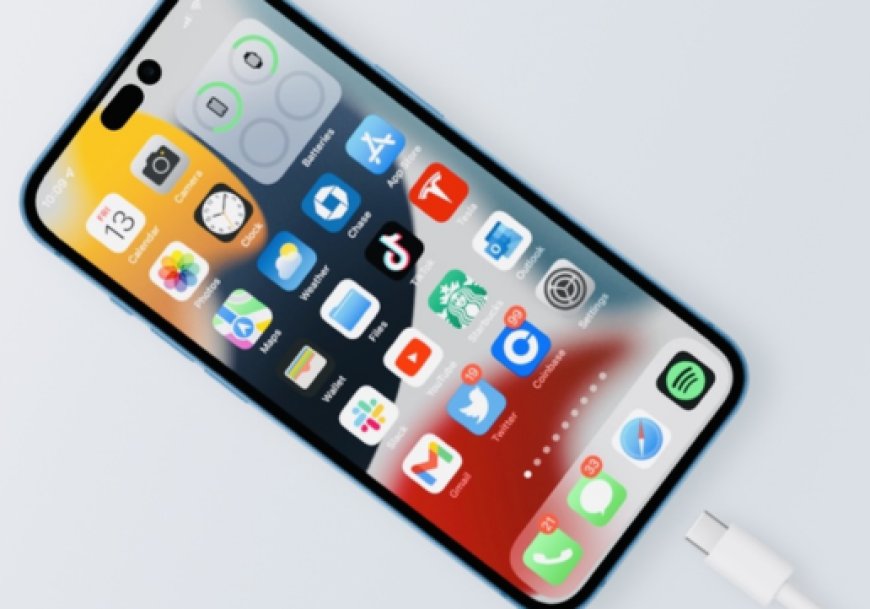Apple wants to Build an iPhone without any Ports
Apple is reportedly working on a revolutionary iPhone design that eliminates all physical ports, including the charging and data transfer ports.

n a bold step toward a completely wireless future, Apple is reportedly developing an iPhone with no physical ports — eliminating traditional charging and data transfer points entirely. The new design aims to deliver a sleeker, more durable, and water-resistant device, redefining how users experience smartphone connectivity.
According to reports from reliable industry sources, Apple’s design teams are experimenting with prototypes that rely entirely on wireless charging and data transfer technologies, marking one of the most significant design overhauls since the iPhone’s debut in 2007.
A Step Toward the Future of Seamless Design
Apple’s motivation behind removing all physical ports centers on simplicity, aesthetics, and longevity.
By removing the Lightning or USB-C port, Apple intends to:
-
Streamline the iPhone’s overall design
-
Minimize hardware vulnerabilities
-
Improve resistance against dust, moisture, and debris
-
Enhance the device’s durability and water resistance rating
This move also aligns with Apple’s ongoing philosophy of minimizing external components — similar to how the company previously removed the headphone jack, Home button, and even SIM card slots in recent iPhone models.
Wireless Technologies to Power the Transition
The success of a portless iPhone depends heavily on advancements in wireless technology. Apple has already taken major steps in that direction through:
-
MagSafe: Introduced as a magnetic wireless charging system, MagSafe provides fast and stable charging for recent iPhones. Apple is reportedly working on enhancing its charging efficiency and speed to rival wired connections.
-
Wi-Fi 7, Bluetooth 5.4, and Ultra-Wideband (UWB): These next-gen standards are expected to handle data transfer, synchronization, and file sharing without the need for cables.
-
Cloud-Based Ecosystem Integration: Services like iCloud, AirDrop, and Apple Continuity already allow seamless wireless backups, data syncs, and transfers between devices.
If these technologies mature as expected, users could charge, sync, and transfer data entirely wirelessly, eliminating the need for physical connectors.
Challenges Ahead: Speed, Compatibility, and Convenience
While Apple’s portless vision represents innovation at its peak, several challenges remain before such a product becomes mainstream:
-
Charging Speed: Wireless charging is typically slower and generates more heat compared to wired methods.
-
Data Transfer: Large data transfers (e.g., 4K videos or backups) require extremely stable and high-speed connections.
-
Accessory Compatibility: Many users still depend on wired accessories, from microphones to external drives.
-
Regulatory Hurdles: Some regions (like the EU) have mandated USB-C for standardization — a factor Apple must navigate carefully.
Industry insiders suggest that Apple is testing multiple solutions, including faster MagSafe variants and new wireless data standards, to overcome these obstacles.
Analysts Predict a Gradual Rollout
Analysts believe Apple won’t make the switch abruptly. Instead, the company may introduce the first portless iPhone as a premium variant, possibly within the next two to three years, alongside traditional models.
According to tech analyst Mark Gurman (Bloomberg), Apple’s long-term strategy is to create a closed, self-sufficient ecosystem — one where every iPhone function, from charging to diagnostics, happens wirelessly or via software.
Setting a New Industry Benchmark
If realized, a portless iPhone would represent more than just a design shift — it would be a statement of technological leadership. The move could set a new industry benchmark, pushing competitors like Samsung, Google, and Xiaomi to follow suit.
Apple’s pursuit of a fully wireless smartphone reflects its broader ambition: to merge minimalist design, cutting-edge innovation, and sustainability into a single, forward-looking product experience.
While Apple has not officially confirmed the development, experts agree that this evolution is inevitable — and when it arrives, it will once again redefine the future of smartphones.

 Ateeq Ur Rehman
Ateeq Ur Rehman